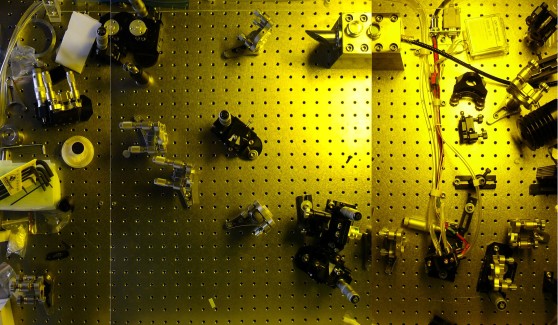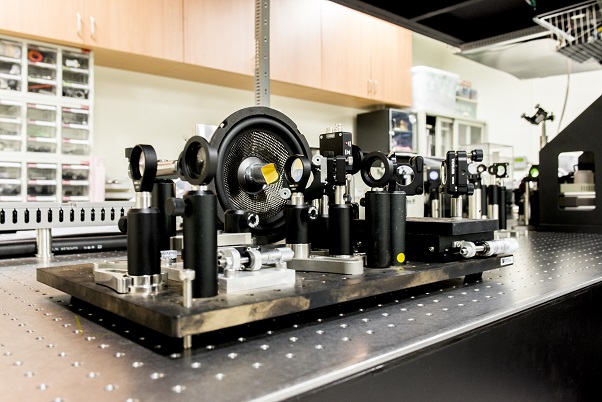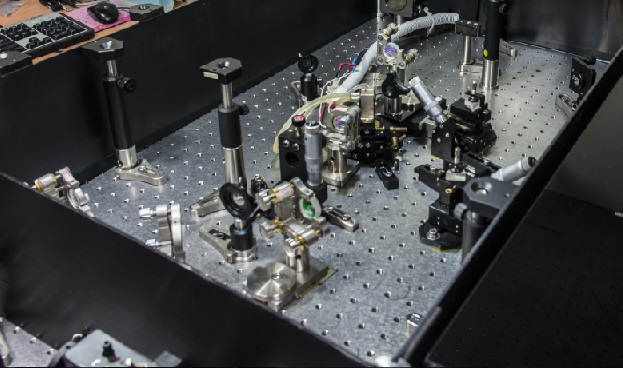Femtosecond lasers are important light sources for the excitation of nonlinear contrasts for in vivo microscopy
Our lab has practical experiences in the engineering of ultrafast lasers for various scientific and medical applications. Ultrafast lasers exploit nonlinear optical properties of gain media to produce picosecond (10-12 sec) to femtosecond (10-15 sec) light pulses. Such laser sources have instantaneous intense electric fields that can launch impulse response of material systems. With a help of pump-probe setup, people used them to study ultrafast phenomenon like carrier dynamics and nanoultrasonics in quantum well samples. Intense electric fields can also generate nonlinear optical signals in materials. With the plasmon enhancement or dipolar enhancement, photonic properties of nanomaterials can be greatly enhanced. They can serve as contrast agents for molecular imaging. Besides, biological materials can have intrinsic contrasts of two-photon fluorescence, second harmonic generation, and third harmonic generation. Using ultrafast lasers, these contrasts have intrinsic sectioning capability for in vivo laser scanned microscopy.




